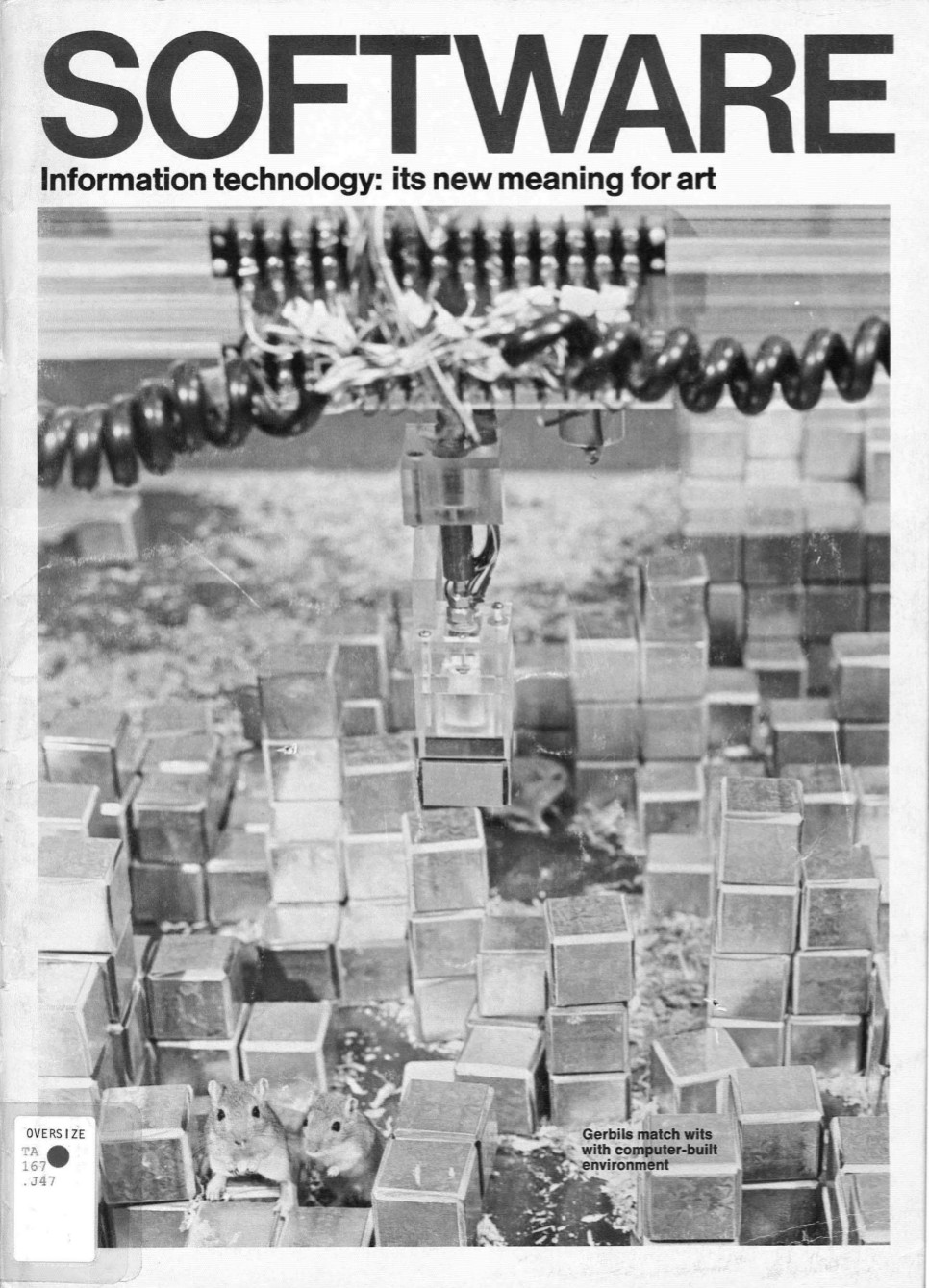Christopher Alex McLean: Artist-Programmers and Programming Languages for the Arts (2011)
Filed under thesis | Tags: · art, code, computing, language, live coding, programming, software, software art, sound recording, synaesthesia, visual programming
“We consider the artist-programmer, who creates work through its description as source code. The artist-programmer grandstands computer language, giving unique vantage over human-computer interaction in a creative context. We focus on the human in this relationship, noting that humans use an amalgam of language and gesture to express themselves. Accordingly we expose the deep relationship between computer languages and continuous expression, examining how these realms may support one another, and how the artist-programmer may fully engage with both.
Our argument takes us up through layers of representation, starting with symbols, then words, language and notation, to consider the role that these representations may play in human creativity. We form a cross-disciplinary perspective from psychology, computer science, linguistics, human-computer interaction, computational creativity, music technology and the arts.
We develop and demonstrate the potential of this view to inform arts practice, through the practical introduction of software prototypes, artworks, programming languages and improvised performances. In particular, we introduce works which demonstrate the role of perception in symbolic semantics, embed the representation of time in programming language, include visuospatial arrangement in syntax, and embed the activity of programming in the improvisation and experience of art.”
Doctoral thesis
Goldsmiths, University of London, October 2011
Supervisor Geraint Wiggins
Co-supervisor Mark d’Inverno
172 pages
Software: Information Technology: Its New Meaning for Art, catalogue (1970)
Filed under catalogue | Tags: · art, computer art, computing, conceptual art, cybernetics, machine, software, software art

Software was a show curated by an artist and critic Jack Burnham for the Jewish Museum in Brooklyn, New York City, 16 September – 8 November 1970, and the Smithsonian Institution, Washington, D.C., 16 December 1970 – 14 February 1971. The show put together computers and conceptual artists, linking them through the idea of software as a process or a program to be carried out by a machine or, why not, by the audience based on “instruction lines” formulated by the artist.
Participating artists: Vito Acconci, David Antin, Architecture Group Machine M.I.T., John Baldessari, Robert Barry, Linda Berris, Donald Burgy, Paul Conly, Agnes Denes, Robert Duncan Enzmann, Carl Fernbach-Flarsheim, John Godyear, Hans Haacke, Douglas Huebler, Joseph Kosuth, Nam June Paik, Alex Razdow, Sonia Sheridan, Evander D. Schley, Theodosius Victoria, Laurence Weiner.
Catalogue coordinator Judith Benjamin Burnham
Publisher The Jewish Museum, 1970
71 pages
via Marina Noronha <3
more about the show (Monoskop wiki)
more about Jack Burnham (Monoskop wiki)
PDF (no OCR, black&white)
Comments (2)Olga Goriunova: Art Platforms and Cultural Production on the Internet (2011)
Filed under book | Tags: · art, code, cultural production, electronic literature, internet, networks, organization, software, software art, web

“In this book, Goriunova offers a critical analysis of the processes that produce digital culture. Digital cultures thrive on creativity, developing new forces of organization to overcome repetition and reach brilliance. In order to understand the processes that produce culture, the author introduces the concept of the art platform, a specific configuration of creative passions, codes, events, individuals and works that are propelled by cultural currents and maintained through digitally native means. Art platforms can occur in numerous contexts bringing about genuinely new cultural production, that, given enough force, come together to sustain an open mechanism while negotiating social, technical and political modes of power.
Software art, digital forms of literature, 8-bit music, 3D art forms, pro-surfers, and networks of geeks are test beds for enquiry into what brings and holds art platforms together. Goriunova provides a new means of understanding the development of cultural forms on the Internet, placing the phenomenon of participatory and social networks in a conceptual and historical perspective, and offering powerful tools for researching cultural phenomena overlooked by other approaches.”
Publisher Routledge, 2011
Volume 35 of Routledge Research in Cultural and Media Studies
ISBN 0415893100, 9780415893107
228 pages
Reviews: Annet Dekker (OPEN, 2012), Tony Sampson (Mute, 2012), Alessandro Ludovico (Neural, 2012), Hanna Kuusela (Media, Culture & Society, 2013).
PDF (updated on 2018-10-23)
Comments (2)
